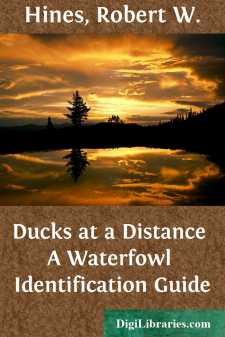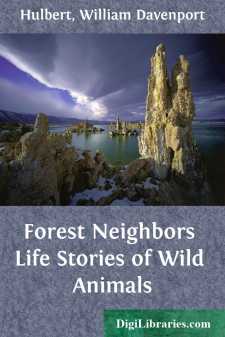Nature
Nature Books
Sort by:
DEVELOPMENT OF THE DIGESTIVE CANAL OF THE AMERICAN ALLIGATOR By ALBERT M. REESE Professor of Zoology, West Virginia University In a previous paper () the writer described the general features in the development of the American Alligator; and in other papers special features were taken up in more detail.In the present paper the development of the enteron is described in detail, but the derivatives of...
more...
INTRODUCTION This beautiful volume has been written for a good purpose. I had the pleasure of reading the proof-sheets of the book while in the Yellowstone National Park, where no gun may be lawfully fired at any of God's creatures. All animals there are becoming tame, and the great bears come out of the woods to feed on the garbage of the hotels and camps, fearless of the tourists, who look on...
more...
by:
Barnum Brown
Chapter I. Its Antiquity, Duration and Significance in Geologic History. Palæontology deals with the History of Life. Its time is measured in geologic epochs and periods, in millions of years instead of centuries. Man, by this measure, is but a creature of yesterday—his "forty centuries of civilization" but a passing episode. It is by no means easy for us to adjust our perspective to the...
more...
INTRODUCTION One of the effects of the modern advance in natural science has been greatly to increase the attention which is devoted to the influences that the conditions of diverse peoples have had upon their development. Man is no longer looked upon, as he was of old, as a being which had been imposed upon the earth in a sudden and arbitrary manner, set to rule the world into which he had been sent...
more...
by:
Robert W. Hines
Identification is Important Identifying waterfowl gives many hours of enjoyment to millions of people. This guide will help you recognize birds on the wing—it emphasizes their fall and winter plumage patterns as well as size, shape, and flight characteristics. It does not include local names. Recognizing the species of ducks and geese can be rewarding to birdwatchers and hunters—and the ducks....
more...
Marco Polo, had he confined himself to a sober narration of his travels, would have left to posterity a valuable record of the political institutions and national customs of the peoples of his day in the Far East. He was not satisfied with doing this, but added to his narrative a number of on-dit more or less marvellous in character, which he collected from credulous or inventive persons with whom he...
more...
FOREWORD. When, some time since, in consequence of continuing demands, the Brooklyn Entomological Society resolved to publish a new edition of its Explanation of Terms used in Entomology, and entrusted the writer and two associates with the task of preparing the same, it was believed that a little revision of definitions, the dropping of a few obsolete terms and the addition of a few lately proposed,...
more...
by:
Zoe Meyer
PAL In the depths of the green wilderness, where dark spruce and hemlock guard the secrets of the trail, are still to be found wild creatures who know little of man and who regard him with more of curiosity than of fear. Woodland ponds, whose placid waters have never reflected the dark lines of a canoe, lie like jewels in their setting of green hills; ponds where soft-eyed deer come down to drink at...
more...
INTRODUCTION Somethirty years ago, while out on one of his landlooking trips in the woods of Northern Michigan, my father came upon a little lake which seemed to him the loveliest that he had ever seen, though he had visited many in the course of his explorations. The wild ponds are very apt to be shallow and muddy, with low, marshy shores; but this one was deep and clear, and its high banks were...
more...
by:
Jacob Abbott
CHAPTER I. THE MOUTH OF THE KENNEBEC. One summer, Forester and Marco Paul formed a plan for going to Quebec. Marco was very much interested in going to Quebec, as he wanted to see the fortifications. Forester had told him that Quebec was a strongly-fortified city, being a military post of great importance, belonging to the British government. Marco was very much pleased at the idea of seeing the...
more...











